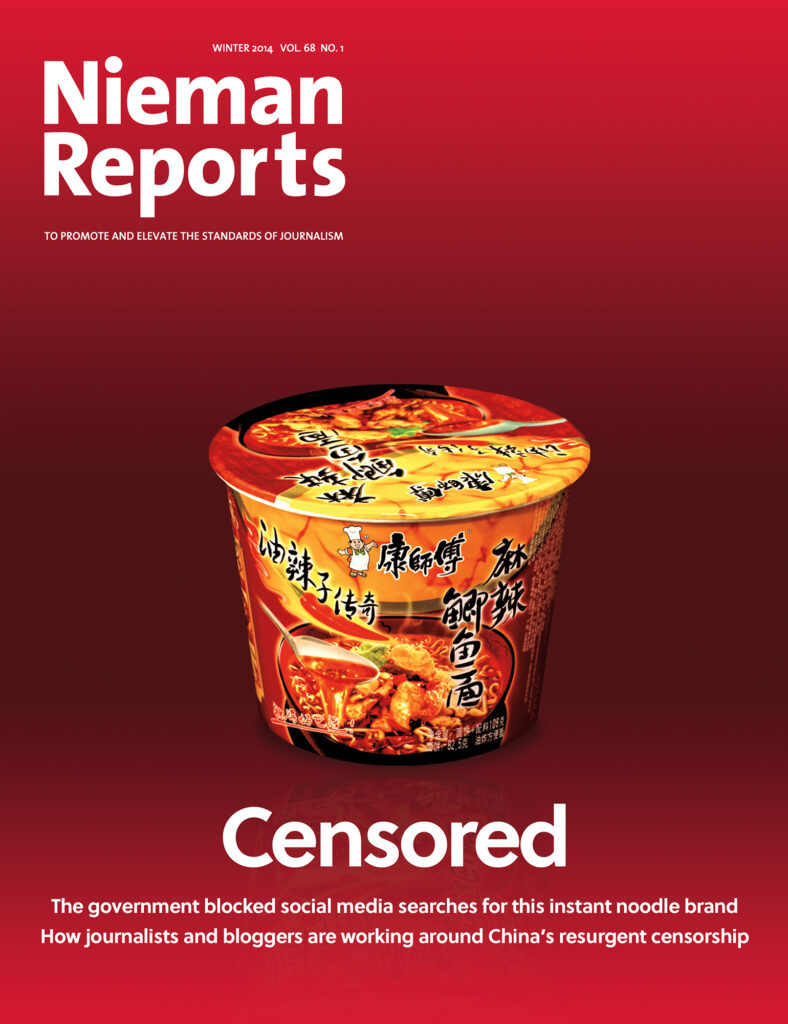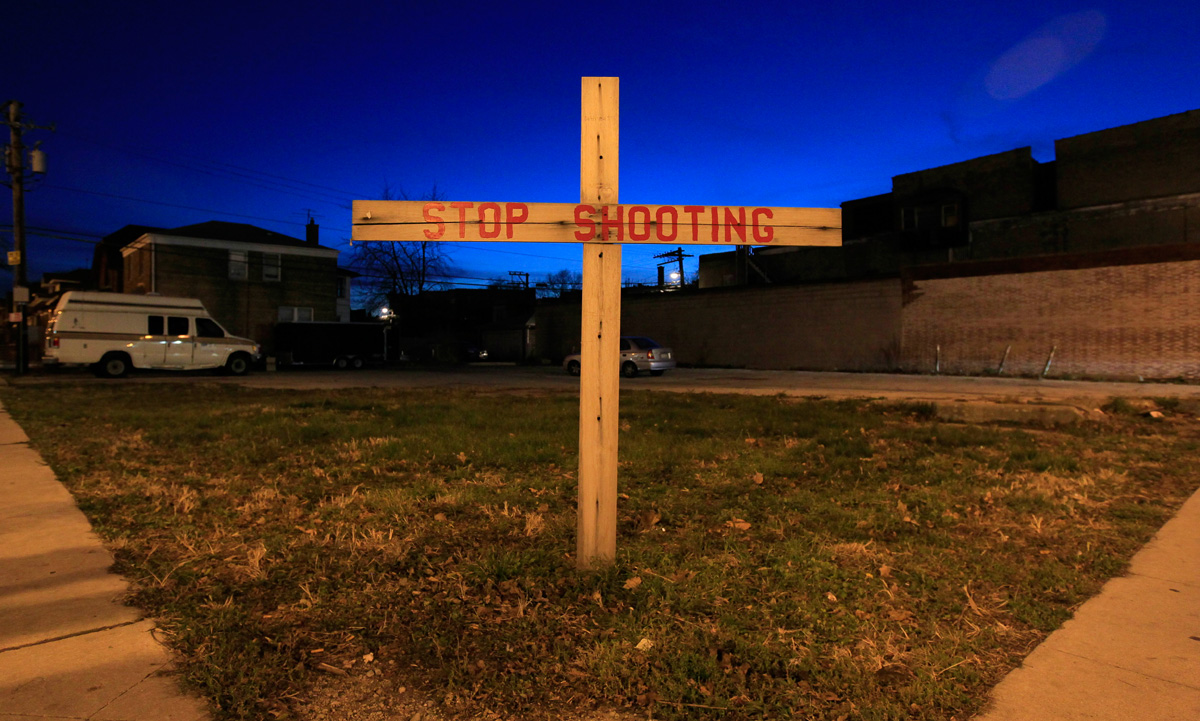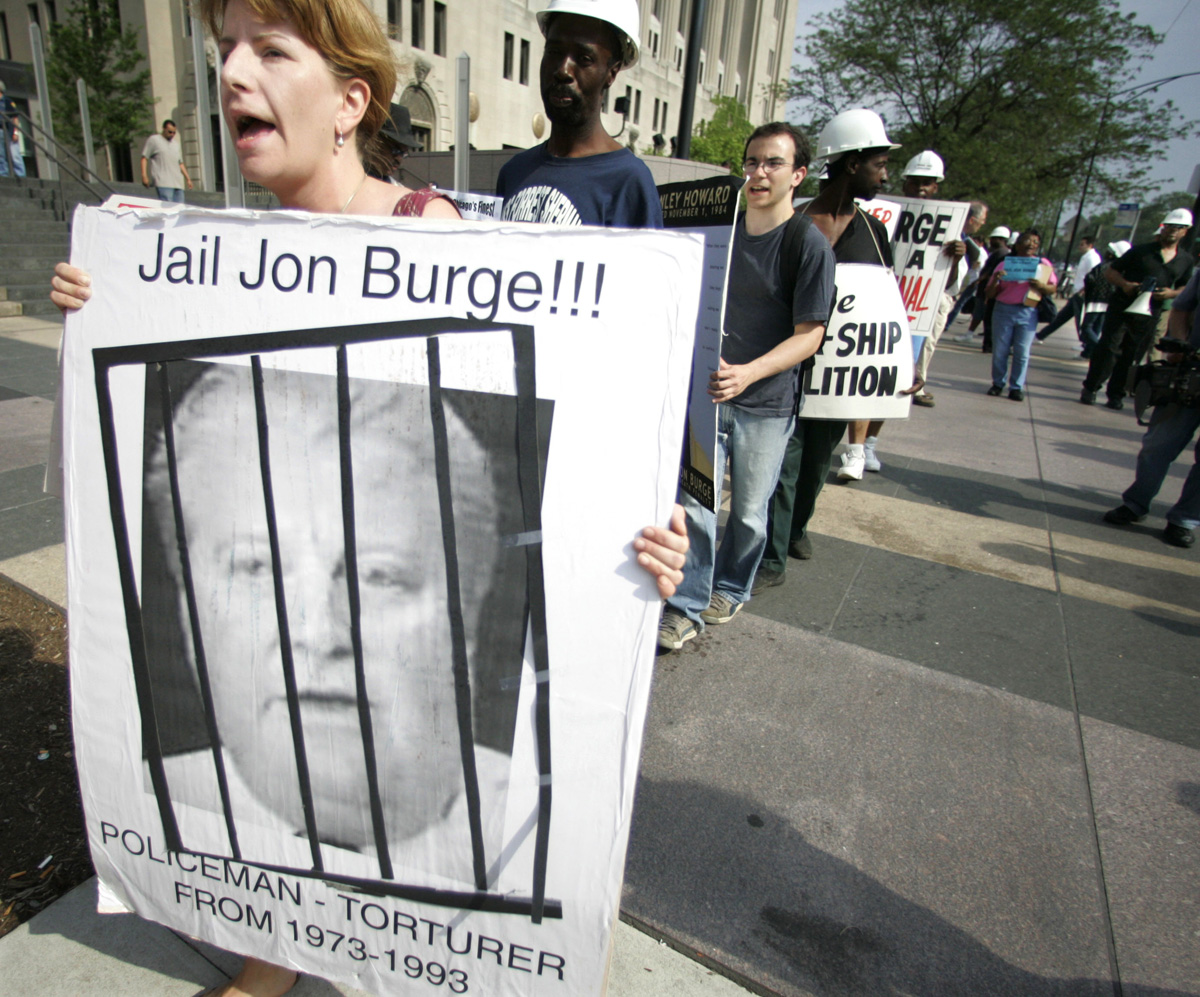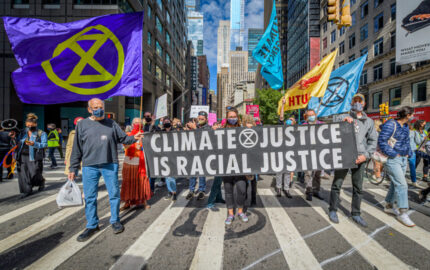
The State of Journalism in China
The Communist Party has long striven to control freedom of speech in China. Websites from around the world are blocked. Major social media cannot be accessed, and advanced software is used to delete “sensitive” entries from the Internet. Domestic journalists who step over the invisible line of what’s permissible face being fired or even arrested, while foreign journalists face various forms of government intimidation. How reporters are trying to work around China's resurgent censorship, 25 years after Tiananmen.
John A. McDermott founded The Chicago Reporter in 1972. Despite his best intentions, the Reporter is still around today.
A civil rights activist who stood with the Rev. Martin Luther King Jr. during his 1966 fair housing campaign in Chicago, McDermott believed that the city needed a publication that would measure its progress toward achieving racial and economic justice by the numbers. Many years and more than 100 awards later, the Reporter’s mission remains the same: investigating race and poverty. That would vex McDermott, who hoped racial equality would prevail and put his magazine out of business.
The Chicago Reporter is a rarity as an investigative nonprofit news organization that focuses on race and poverty. It’s older than the Center for Public Integrity and many other venerable national nonprofit news outlets. The Reporter is under the umbrella of a faith-based nonprofit, the Community Renewal Society, and supported by grants and contributions from individuals.
However, as it enters its 40s, the Reporter is navigating a culture change. The mission hasn’t changed, but how we cover race and poverty has—partly because of digital journalism and partly because of growing income inequality and the complex racial dynamics of having a black commander in chief. Americans have and have not overcome, making this one of the most fascinating times to cover race.
For much of the Reporter’s existence, the staff has produced long, data-driven investigations about structural racism, which have stirred policymakers and opinion leaders to action. In 2007, our most high-profile investigation prompted the state attorney general to sue Countrywide Financial Corporation and its subsidiaries for pushing subprime mortgages on creditworthy Latinos and African-Americans.
But until recently, the website was largely an afterthought. As the new editor and publisher of the Reporter, I’m working with a staff of two reporters, two photojournalism fellows, two editors, and contract bloggers to transform an influential publication into an influential daily website. Since I accepted this job, I’ve been asked the same question: “How are you going to do that with such a small staff?”
Because data has been the Reporter’s calling card for years, we started there, reimagining how to use numbers online in a timely, creative and compelling way. ProPublica’s Tools & Data page provided ideas.
The site’s graphics and interactive databases are powerful explanatory journalism on their own. Recently, the investigative news organization published a series on the landmark 1968 Fair Housing Act that featured an interactive map that showed the relationship between the Great Migration and housing segregation in Chicago and other Midwestern cities. The concentration of African-Americans in these cities following the journey north mirrors residential segregation patterns today. ProPublica’s map was a history lesson in structural racism.
The award-winning investigative outfit isn’t the only organization we’ve looked to for ideas. While ProPublica’s work highlights the analytical power of data, Homicide Watch D.C. shows its emotional potential. The website corrals data to put a human face on the district’s murders, combining maps, police and court records, photos of the victims and reminiscences from family and friends. Personal stories are intermingled with demographics about the victims and their alleged killers, capturing in one place who is dying and who is doing the killing. In D.C., as in Chicago, violence is concentrated in poor and black communities. (The Chicago Sun-Times now publishes a Homicide Watch Chicago.)
As the Reporter considers what interactive databases it wants to create, we can learn from both Homicide Watch and ProPublica’s approach. But with any database, the most important considerations are whether it serves the public interest and provides critical information. And having the right database is one way to become a destination site. In Chicago, plenty of news and information sites have zeroed in on the city’s homicide rate, creating databases that are grim go-to destinations for the latest deaths. Though it has fallen this year, the death toll is concentrated in some of the city’s poorest neighborhoods and disproportionately claims African-American youth. When it comes to crime, race and poverty are intertwined.
In our search for a database that would serve the public interest and capture an ongoing racial injustice, we settled on police misconduct cases. If Chicago is known for its homicides, it’s also known for the torture of crime suspects from the 1970s to 1990s under the orders of a now notorious police commander, Jon Burge. The practice caught the attention of former United Nations Secretary-General Kofi Annan when local groups raised it as a human rights issue. A steady stream of victims have been released from prison and settled financially with the city. It is no surprise that the victims are predominantly African-American.
Databases matter; so does being nimble with numbers. We break news with our investigations, yet, if we’re not part of the daily conversation, we appear irrelevant to readers—and the donors who keep us going.

The daily news site Colorlines masterfully taps the Zeitgeist around race, with its mix of investigations, viral videos, blogs and graphics. For Thanksgiving, Colorlines created an infographic examining the impact of “Black Thursday” on retail workers. The graphic simply yet effectively put into context what the dash to boost sales meant to some of the nation’s lowest-paid workers, many of whom are single mothers.
Learning from Colorlines, we’re using numbers to add context to daily news stories. Recently, we dusted off numbers from a previous investigation to contextualize a story about an African-American man who was awarded $1 million in a police misconduct case. Our research showed that the officer named in the lawsuit had been listed in several similar lawsuits, yet he remained on the Chicago police force.
Digital journalism alone isn’t changing how the Reporter covers race and poverty. The issue of income inequality has received a push from President Obama, former U.S. Secretary of Labor Robert Reich, and Nobel Prize-winning economist Joseph Stiglitz. This attention has caused us at the Reporter to rethink our starting point for covering these issues. While the Reporter remains true to coverage of the least in Chicago, income inequality is broadening the conversation about poverty into a discussion about opportunity, and who does and doesn’t have it.
The adage “Follow the money” is a staple of investigative and watchdog journalism. Yet when it comes to covering poverty and race, investigative reporters often ignore the policies that enable the powerful and privileged to thrive. There are the stories about the Wall Street wolves that prey on investors and markets; the CEOs who bank millions of dollars while their lowest-paid workers can’t qualify for food stamps. But on a daily basis, journalists don’t cover, whether it is the city budget or whose car gets towed, how the most privileged in our communities benefit from government policies, tax codes, access, and exclusive networks. We plan to spend more time “investigating up,” placing the focus on those who gain from and game the system.
While we’ve conducted a variety of investigations over the years, the Reporter has often focused on the city’s poorest residents, those once trapped in its looming public housing developments. These are the forgotten voices. But stories at the intersection of race and poverty aren’t the only race stories to be told. Like the majority of their fellow Americans, working and middle class people of color realize the gap between the ideal of opportunity for all and the reality of declining economic mobility. The steady erosion of the black middle class in the recent economic crisis is a little-told story. But it too is as much a snapshot of structural racism as incarceration figures for black men.
In the end, it takes an audience to survive. How we tell the story matters, and data matters. But ultimately it’s the quality and breadth of our stories on which we stake our survival. The thoroughness and timeliness of our coverage about race and poverty will determine whether the Reporter will be around another 40 years—or at least until we complete the mission John A. McDermott set out for us.
Susan Smith Richardson, a 2003 Nieman Fellow, is editor and publisher of The Chicago Reporter



